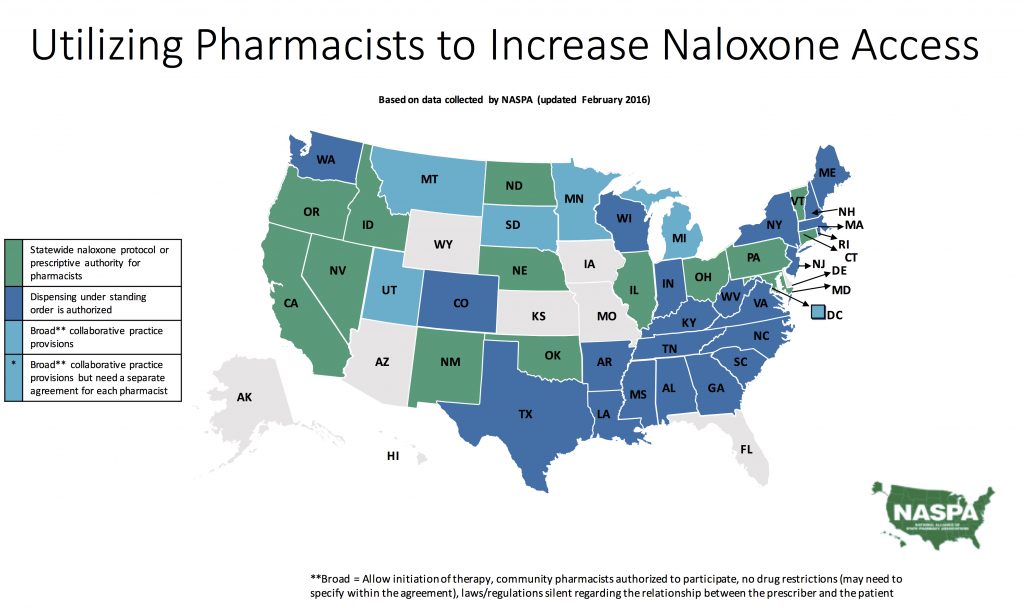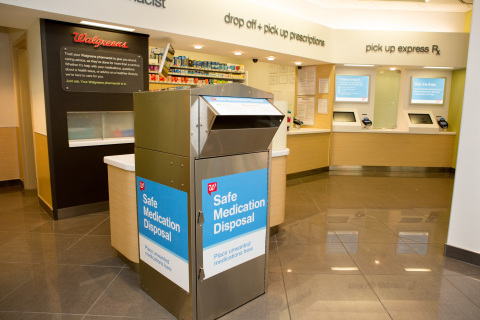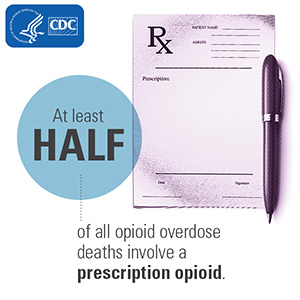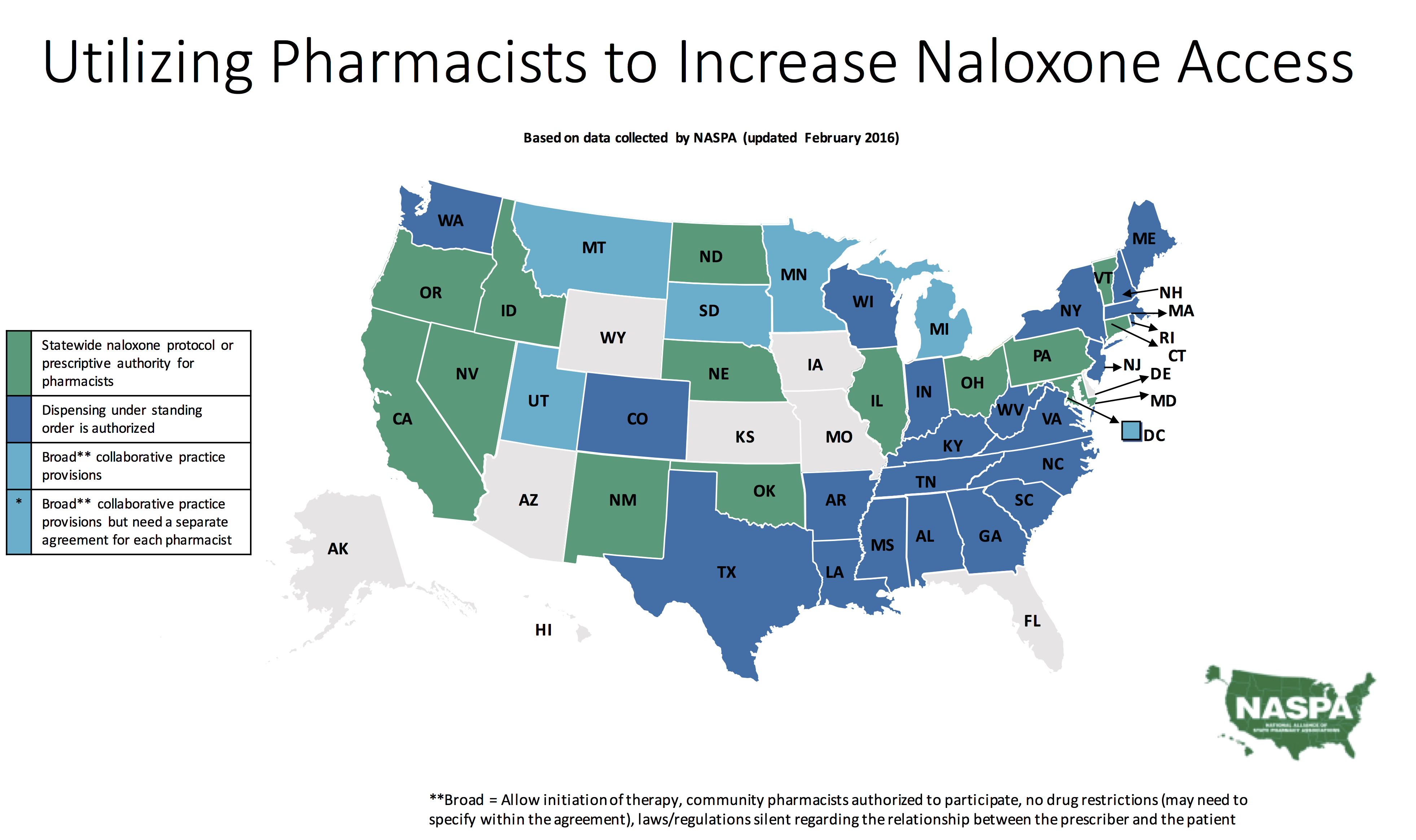 The ranks of pharmacies making available the overdose reversal medication naloxone without a prescription or seeing a doctor, is fast-growing. These announcements from retail pharmacy chains and grocery stores is a collective retail health-response to the opioid epidemic, a mainstream public health challenge across America.
The ranks of pharmacies making available the overdose reversal medication naloxone without a prescription or seeing a doctor, is fast-growing. These announcements from retail pharmacy chains and grocery stores is a collective retail health-response to the opioid epidemic, a mainstream public health challenge across America.
Naloxone is used in the event of an overdose. It can reverse the impacts of opioids, administered by injection or nasal spray.
Note the latest press releases from pharmacy chains and supermarkets offering “free naloxone” without prescription:
- in five states (Alabama, Kentucky, Mississippi, North Carolina and Tennessee)
- Kroger sells naloxone at all of the grocer’s pharmacies in Kentucky, which ranks in the top five states with the highest overdose death rate according to the CDC. Kroger worked with Dr. Jeremy Engel of Bellevue Primary Care to develop a protocol and processes for dispensing naloxone without a prescription in the state as well as Trish Freeman, RPh, PhD, President of Kentucky Pharmacists Association (KPhA) and clinical associate professor at the University of Kentucky College of Pharmacy, on staff training.
- is offering naloxone without prescription in 31 states, “dedicated to helping the communities we serve address and prevent drug abuse…expanding access to naloxone to give more people a chance to get the help they need for recovery,” explained Tom Davis, VP pharmacy professional practices at CVS Pharmacy.
- Fruth Pharmacy, a regional chain in Ohio and West Virginia, provides naloxone without prescription. Fruth’s is family-owned company with 29 storefronts in Ohio, West Virginia, and Kentucky.
 In July, Walgreens expanded safe medication drop-off kiosks in 300 stores, where consumers can dispose of unwanted medications (including controlled substances) for free. Walgreens is looking to expand the free naloxone program to at least 7,000 of its 8,200 pharmacies, according to the company’s press release.
In July, Walgreens expanded safe medication drop-off kiosks in 300 stores, where consumers can dispose of unwanted medications (including controlled substances) for free. Walgreens is looking to expand the free naloxone program to at least 7,000 of its 8,200 pharmacies, according to the company’s press release.
Tonya Shackleford, Fred’s Pharmacy director of clinical and professional services, said that, “Research shows, if consumers are given access to life-saving countermeasures for known or suspected opioid overdoses, these events will decrease and lives will be saved.”
 Health Populi’s Hot Points: One important way to stem the prescription of opioids is measuring the prescribing habits of clinicians through ePrescribing mandates. Surescripts latest report into ePrescribing found the number of providers who now can prescribe controlled substances digitally grew 359% in 2015, accompanied by a 600% rise in prescriptions for controlled substances like morphine and oxycodone, among others. In July 2016, Dr. Devon Herrick of the National Center for Policy Analysis argued to make ePrescribing mandatory to deal with the opioid epidemic.
Health Populi’s Hot Points: One important way to stem the prescription of opioids is measuring the prescribing habits of clinicians through ePrescribing mandates. Surescripts latest report into ePrescribing found the number of providers who now can prescribe controlled substances digitally grew 359% in 2015, accompanied by a 600% rise in prescriptions for controlled substances like morphine and oxycodone, among others. In July 2016, Dr. Devon Herrick of the National Center for Policy Analysis argued to make ePrescribing mandatory to deal with the opioid epidemic.




 I am so grateful to Tom Lawry for asking me to pen the foreword for his book, Health Care Nation,
I am so grateful to Tom Lawry for asking me to pen the foreword for his book, Health Care Nation,  I love sharing perspectives on what's shaping the future of health care, and appreciate the opportunity to be collaborating once again with Duke Corporate Education and a global client on 6th May. We'll be addressing some key pillars to consider in scenario planning such as growing consumerism in health care, technology (from AI to telehealth), climate change, and trust -- the key enabler for health engagement or dis-engagement and mis-information. I'm grateful to be affiliated with the corporate education provider
I love sharing perspectives on what's shaping the future of health care, and appreciate the opportunity to be collaborating once again with Duke Corporate Education and a global client on 6th May. We'll be addressing some key pillars to consider in scenario planning such as growing consumerism in health care, technology (from AI to telehealth), climate change, and trust -- the key enabler for health engagement or dis-engagement and mis-information. I'm grateful to be affiliated with the corporate education provider  Thank you FeedSpot for
Thank you FeedSpot for